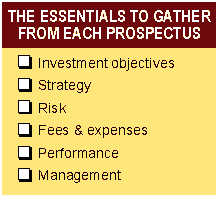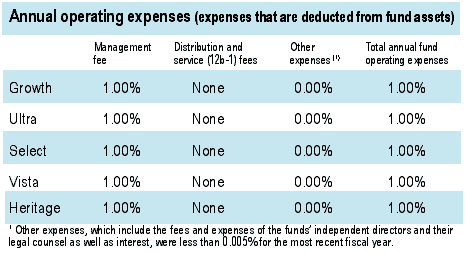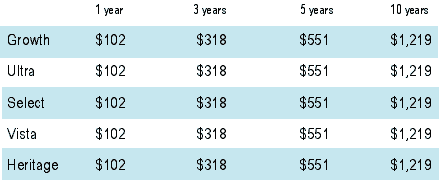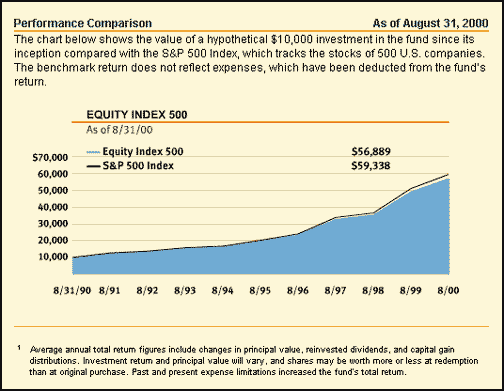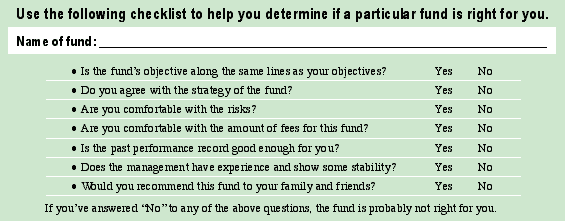
HOT TOPICS LIST
- Strategies
- Stocks
- Buy
- Investing
- Brokers
- Psychology
- Interviews
- Accumulate
- Sell
- Hold
- Spotlight
- Websites
- Candlestick Corner
- Gold & Metals
- Options Trading
LIST OF TOPICS
MUTUAL FUNDS
Prospectus Hunting
11/22/00 03:09:36 PM PSTby Han Kim
Here's how to read a prospectus and get the essentials from it.
| Before putting any money into a mutual fund, read the prospectus. A prospectus is a document prepared by the mutual fund company that provides general information on a specific fund or group of funds, including the fund's objectives; the fund's managers and their experience; the fees and charges associated with the fund; and policies and restrictions. You can call a mutual fund company or your brokerage firm and have a prospectus mailed to you, or nowadays, you can often view them online at the mutual fund company's Website. Although the prospectus doesn't provide all the information you may be looking for, it is still a starting point and your main source of information. Of course, not all fund prospectuses are the same, but generally they will contain the points shown in Figure 1. It is to your advantage to go through the prospectus of any fund you may be considering adding to your portfolio.
The importance of paying attention to the fund's investment objectives or goals is to determine whether they are in stride with your personal investment goals. There's no point in investing in a fund that provides current income when your investment objective is to achieve capital growth. The objectives or goals of the fund are usually explained briefly; T. Rowe Price's objective of their Prime Reserve Fund is, for example, "preservation of capital, liquidity, and, consistent with these, the highest possible current income." And that's it. This investment objective does not delve into details, but it gives you enough information to determine whether the fund is right for you. STRATEGY The fund strategy briefly explains how the fund plans to reach its goals. As mentioned earlier, the strategies will vary from fund to fund. An example can be seen in Figure 2. In strategy statements, you should take note of words like "generally" and "primarily." These words are there to give you a sense of what the strategy is but also serves to give the manager(s) the flexibility to make changes depending on circumstances.
Every investment carries risk, and some will be riskier than others. This section of the prospectus contains information on the main risks that could affect the net worth of your portfolio if you were to invest in the fund. For example, global funds carry other risks, such as political instability, exchange rates, government regulations, and diplomatic tensions. In one of its prospectuses, Invesco International Funds, Inc., discusses the risks involved with investing in its international funds (Figure 3). Here, you can see some of the risks involved in investing in foreign securities.
FEES AND EXPENSES There are different types of fees and expenses involved in a mutual fund. Mutual funds are generally divided into two types, load and no-load. The load is a sales commission that can be charged upfront when purchasing the fund (front-end load) or at the end when selling the fund (back-end load). While load funds charge load fees, both load and no-load funds funds charge other fees as well; with no-load funds, these are what you should look for. Such fees include management fees, distribution or 12b-1 fees, and other expenses. The management fee is the percentage taken out annually to pay for incurred expenses necessary to manage the fund. The 12b-1 fees cover the marketing and distribution costs, which are separate from other management expenses. The "other" expenses include any additional fees or expenses the fund incurs. There is even a fee for account balances below a certain level. All these expenses -- the management fee, 12b-1 fee, and other miscellaneous fees -- add up to give you the expense ratio or total annual fund operating expenses. This is the percentage you pay every year you hold the fund, in addition to the load if the fund is a load fund. In a mutual fund's prospectus, expect to see in the fees and expenses section a hypothetical example of how much you would end up paying over time. Examples are typically given for a $10,000 investment and assuming a 5% annual return, so you can compare the fees with those of other funds. Figure 4 shows the fees and expenses section from an American Century prospectus for five of its growth funds.
PERFORMANCE By now you've seen, time and again, the disclaimer that "past performance does not guarantee future results." Still, it's a good idea to get insight into how the fund has performed over the years. There is no way to know how a fund will perform in the future, but you should go with one that has consistently done well. The difficulty comes in when you are evaluating a fund that has recently entered the market. With a relatively new fund, there is always a high risk. The performance of a fund will often be given as an average return for the past three months, six months, one year, three years, five years, and 10 years. Long-term average returns are more significant. These figures should be compared to similar funds and a relevant benchmark. For example, T. Rowe Price's Equity Index 500 is compared with the Standard & Poor's 500 index in Figure 5.
The management team behind a fund should not be overlooked. Look at how many years the manager(s) have been with the fund and how well the fund has performed during those years. In addition, look at the board of directors of the company and see how many of them are from outside the company. CONCLUSION There are certain criteria that you should look for in a prospectus. What are the objectives of the fund? (Is this fund trying to do what I want?) What are the strategies of the fund? (How is it going to do it?) What kind of risk is involved? (How vulnerable will I be?) What kind of fees and expenses are involved? (What will it cost me?) What kind of performance has the fund had in the past? And finally, who's in charge of the fund? Use the checklist in the sidebar above to help you determine whether the fund is right for you. With the right knowledge under your belt, you should be able to select funds that are right for you. Select those that are in line with your investment objectives. Select those with a strategy you agree with. You also want your funds to have a risk level you can tolerate. And if the fund has a good track record and management team, then all the better. Last, but not least, don't overlook your annual expenses, since they can eat into your overall returns.
| |||
Staff Writer
| Title: | Webmaster |
| Company: | Technical Analysis, Inc. |
| Address: | 4757 California AVE SW |
| Seattle, WA 98116 | |
| Phone # for sales: | 206-938-0570 |
| Fax: | 206-938-1307 |
| Website: | working-money.com |
| E-mail address: | hkim@traders.com |
Traders' Resource Links | |
| Charting the Stock Market: The Wyckoff Method -- Books | |
| Working-Money.com -- Online Trading Services | |
| Traders.com Advantage -- Online Trading Services | |
| Technical Analysis of Stocks & Commodities -- Publications and Newsletters | |
| Working Money, at Working-Money.com -- Publications and Newsletters | |
| Traders.com Advantage -- Publications and Newsletters | |
| Professional Traders Starter Kit -- Software | |
PRINT THIS ARTICLE

|

Request Information From Our Sponsors
- StockCharts.com, Inc.
- Candle Patterns
- Candlestick Charting Explained
- Intermarket Technical Analysis
- John Murphy on Chart Analysis
- John Murphy's Chart Pattern Recognition
- John Murphy's Market Message
- MurphyExplainsMarketAnalysis-Intermarket Analysis
- MurphyExplainsMarketAnalysis-Visual Analysis
- StockCharts.com
- Technical Analysis of the Financial Markets
- The Visual Investor
- VectorVest, Inc.
- Executive Premier Workshop
- One-Day Options Course
- OptionsPro
- Retirement Income Workshop
- Sure-Fire Trading Systems (VectorVest, Inc.)
- Trading as a Business Workshop
- VectorVest 7 EOD
- VectorVest 7 RealTime/IntraDay
- VectorVest AutoTester
- VectorVest Educational Services
- VectorVest OnLine
- VectorVest Options Analyzer
- VectorVest ProGraphics v6.0
- VectorVest ProTrader 7
- VectorVest RealTime Derby Tool
- VectorVest Simulator
- VectorVest Variator
- VectorVest Watchdog

